Top 20 best indoor flowers that purify the air
Indoor flowers are grown for decorative and practical purposes. Some parts of them are used for the preparation of medicines, green leaves absorb harmful substances from the air, filtering them and preventing harm to humans or animals. It is worth asking what kind of air-purifying flowers exist, as it becomes clear that they are all well and long known to everyone.
How flowers clear the air
Plants perform better than any filter for cleaning. Their green parts are emitted by phytoncides - biological substances that neutralize harmful impurities and saturate the air with oxygen. They kill dangerous bacteria by suppressing their growth, preventing fungi and protozoa from multiplying. Phytoncides are almost impossible to collect, except for essential oils. They have no artificial analogues. A person who is constantly in contact with plants decreases the risk of infection:
- whooping cough;
- Escherichia coli;
- Koch's wand;
- Staphylococcus aureus.
Indoor flowers have a beneficial effect on the immune system. A large number of them at home is a guarantee of good health. The main thing is to choose the right flower, some plants are dangerous for animals and small children.
How many plants do you need to purify indoor air
You don't need a lot of plants to purify the air. For a room of 10 sq. meters, 2 medium-sized flowers are enough. But here it must be borne in mind that not all of them are capable of producing the required amount of cleansing substances.
Planting some specimens can be harmful to health. Before you force the premises with pots of flowers, you should learn everything about the plant, perhaps take care of it, and it will be impossible to be in the same pulp with it, there is always a risk of developing an allergy to pollen.
Top 20 indoor flowers for air purification
Almost all plants purify the air, but chlorophytum, geranium and aloe are the best natural filters. It is useful to grow ficuses, climbing ivy and begonia at home. On the desktop, you can place "female happiness" and the sheffler.
Ficus Benjamin
Ficus (Mulberry family) is a tree or shrub grown for the purpose of landscaping, mainly in large rooms. In just a few years, with proper care, it stretches to a height of 2-3 meters. Leaves have decorative properties. They are light green with white stripes (variegated) or dark green without stripes.
In the first version, they resemble birch leaves. Several dozen varieties of ficus are cultivated in the world. All of them need good lighting, abundant watering and spraying. So ficus benjamin grows well at an air temperature of + 25-30 degrees Celsius.
Geranium (pelargonium)
Florists are attracted by colorful inflorescences. The plant blooms in red, pink, white and even orange flowers. Leaves geraniums (Geranium family) secrete essential oils. The grower who grows it has normalized sleep, he feels less stressed and tired. But the specific scent of the flower is not to everyone's liking, it can provoke an allergic reaction.
It is grown on southern windows at a temperature of + 18-25 degrees Celsius. Geranium is unpretentious to the conditions of keeping, watering is frequent, even in the hot season, it is not required.
Gerbera
A simple and beautiful flower that resembles a large multi-colored chamomile (Asteraceae or Asteraceae family). The green parts of the plant absorb carbon dioxide, filter the air, releasing pure oxygen.
Sleeping in rooms where many gerberas grow is very comfortable; insomnia can be forgotten for a long time. It is better to put the gerbera on a well-lit windowsill, water and spray regularly. In this case, it is important to monitor the accumulation of water at the base of the leaves and rosettes. If it doesn’t have time to evaporate, the stem will start to rot.
Spathiphyllum
Female happiness or spathiphyllum (Aroid family) is a tropical plant with beautiful white flowers. It must be watered regularly and abundantly, kept warm (the temperature should not drop below + 16-17 degrees Celsius, the flower will start to ache). Additionally, the leaves are wiped 1-2 times a week with a soft cloth or sponge.
A flowering bush should be placed on a northern or western windowsill, it does not like direct sunlight, preferring shade or partial shade. Watered carefully, trying not to overfill, and therefore using pallets.
The flower fights the fumes of trichlorethylene and ammonia, it is placed in rooms with dry air. Where there is female happiness, there is no place for mold.
Hamedorea
A flowering plant from the Palm family. More than 100 species of hamedorea are grown in the world, some of them are eaten. It's easy to grow them. Plants are undemanding, they grow on poorly fertilized soils, and in the apartment they prefer western and eastern windows, not being capricious, if moved to the shade and kept at a temperature not higher than +12 degrees Celsius.
If possible, it is better to transplant chamedorea into a pot of humus. A well-tended plant is capable of displacing benzene, trichlorethylene and formaldehyde from the room.
Begonia
Belongs to the genus Begonievs, in which there are over 1.5 thousand species. Does not need constant watering, water only after the topsoil dries out. Grows best in rooms with high levels of humidity. You cannot spray, only the air around the plant, trying not to get on the leaves.
Begonia attracts dust, the air becomes cleaner, freeing from fungi and bacteria. The flower is recommended to be placed next to a computer, it reduces the amount of harmful radiation received by a person.
Dieffenbachia
An evergreen plant from the Aroid family. Dieffenbachia's large, flat leaves attract and neutralize chemicals that build up in the air. In an apartment where there are several pots with this flower, there is hardly a place for staphylococcus.
The plant will be useful for people suffering from chronic pneumonia and bronchitis. It is tenacious, it is difficult to spoil something with improper watering or lack of feeding. But when planning to grow dieffenbachia on the windowsill, you should remember that its leaves and juice are poisonous.
Scheffler
Plant from the Araliev family. It grows wild in the tropics, therefore it loves abundant spraying, humidity, high temperatures. Schefflera successfully handles formaldehyde, toluene and benzene in the air. Its leaves resemble the knitting needles of an umbrella, dust quickly accumulates on them and they need to be constantly wiped.
Citrus tree
Citrus trees emit substances that allow maintaining a safe microclimate in the apartment, rid the room of germs and bacteria. The essential oil will calm the body, make it possible to forget about headaches, depression and fatigue.
The work of the nervous system is normalized. Trees are grown from seedlings or seeds. They take care of, as for any fruit crops, watering and feeding as needed.
Anthurium Andre
A flower from the Aroid family. Florists appreciate it for its dense, wide leaves and beautiful bright red flowers. Anthurium releases purified water vapor into the air. Absorbs harmful particles of xylene and toluene, rendering them harmless during processing.
It is not easy to care for this tropical plant, it is extremely capricious, suffers from a lack of light, does not tolerate overflow, it can get sick and lose its decorative properties.
Aloe
Succulent from the Asphodelic family. It is grown to obtain medicinal raw materials. It cleans the air well, freeing it from formaldehyde, which is released from new furniture made of chipboard.
It does not need special care, it is watered as the soil dries out, sometimes the leaves are wiped from dust. Aloe destroys staphylococcus. Its juice is buried in the nose with a cold.
Curly ivy
Curly ivy belongs to the Araliev family. It is a shrub with dark green or light green, variegated leaves. Growing conditions depend on their color. Dark green ivies prefer shade or partial shade, variegated ones require exposing them to well-lit windowsills.
Plants clean the room from benzene, trichlorethylene and carbon dioxide. Ivy also cope with formaldehyde. Better to put the flowerpot right on top of the cabinet. The main thing is not to forget about abundant and regular watering.
Sansevieria
A plant with fleshy variegated erect leaves, up to 1 meter high. One of the most beautiful in the Asparagus family. Extracts formaldehyde from the air. The more pots of sansevieria in a room, the more oxygen it contains. Taking care of her is simple:
- fed with universal fertilizers;
- watered 1-2 times a week in summer and once in winter;
- leaves are constantly wiped from dust.
The flower pot is placed on well-lit windowsills.
Philodendron
An evergreen flowering plant belonging to the Aroid family. Large light leaves will have to be wiped constantly, because it is through them that the house is freed from carbon dioxide, formaldehyde and other air pollutants.
The flower is tropical, needs abundant watering, is able to withstand temperatures above + 30-30 degrees Celsius without consequences.
Myrtle
Woody plant from the Myrtle family. Thanks to the essential oils released from the leaves of the myrtle, the room where the flower pot is located makes breathing much easier.
The green parts of the plant are used to make wreaths, bouquets and brooms. There is almost no need to care for myrtle, it will grow even if no fertilizer is applied to the soil.
Laurel
An evergreen tree naturally growing in the subtropics. For its successful cultivation, it is important to create similar living conditions.
The plant cleans the house from harmful substances and dust. Its leaves and fruits are used to prepare medicinal infusions.
Aglaonema
An evergreen flower (Aroid family) with large mottled light green leaves that take harmful substances from the air, replacing them with essential oils. Aglaonema occurs in the wild in the tropics. It must be constantly watered and sprayed, wiping the leaves with a damp cloth.
It is not demanding for lighting, does not lose its decorative properties even if the soil is not fertile enough.
Dracaena
A beautiful tree or shrub from the Asparagus family. Evergreen dracaena is not demanding on the composition of the soil, it can be watered no more than 1 time per week.
Outwardly, it resembles a palm tree. It is able to clean the air from benzene and trichlorethylene entering the house along with the outside air.
Chlorophytum
A flower from the Asparagus family. From the stem hidden underground, many long and thin variegated leaves depart. Chlorophytums grow rapidly, need abundant watering and good lighting.
They are undemanding to the composition of the soil, they can be grown in soil taken from the garden or from the garden. They purify the air better than others, removing, among other things, xylene. It multiplies quickly, 1-2 bushes are enough to clean a small room.
Cypress
An evergreen tree belonging to the genus of the same name. It is difficult to grow it indoors, with proper care it can reach a height of 1.5-2 meters, wild specimens stretch 70-75 meters.
The cypress, grown as a houseplant, cleans the air of negative ions emitted by electronics, saturates it with positive ions.
Tips for choosing flowers for purifying the air in your apartment, home or office
It is not difficult to choose the right flower for your home, apartment or office. The main thing is to decide on:
- the level of illumination (scarlet and dracaena feel great in direct sunlight, and spathiphyllum prefers partial shade or diffused light);
- a place where a pot with a plant will stand (a cypress cannot be placed on a windowsill, and dracaena grows better in large pots, it needs a lot of space).
It is better to grow in the house:
- dracaena;
- laurel;
- myrtle;
- ivy.
The workplace will be decorated with chlorophytum, cypress or chamedorea. On the windowsill in the apartment begonias, anthuriums, scarlet grow well. It is important to find out everything about how much and when to water, whether the flower needs feeding and spraying.
So, the future owner of his own garden on the windowsill knows that it will not work to constantly transplant, fertilize and spray flowers, it is better to grow dracaena, chlorophytums and cypress trees that do not require constant attention. Delicate begonias and anthuriums will quickly die if you constantly forget about watering and do not pay attention to feeding.
Living plants - grasses, trees, shrubs take hazardous substances from the air, instead saturating it with oxygen. The more flowers in the house, the cleaner the air, its inhabitants get sick less often, do not worry about the appearance of unpleasant odors from new furniture and carpets. Some houseplants can even protect your home from mold. The TOP-20 plants that contribute to a significant improvement in the indoor microclimate include chlorophytum and dracaena, beloved by many.
Video selection of plants that purify the air:



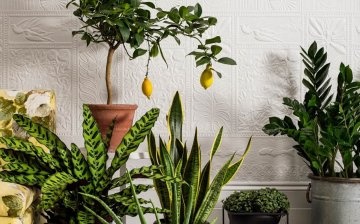
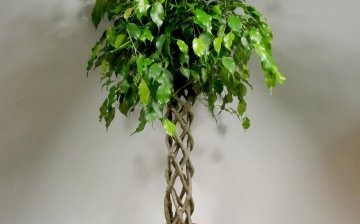
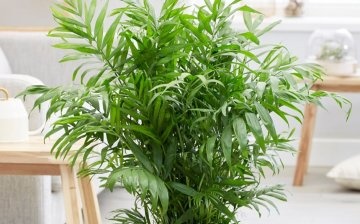
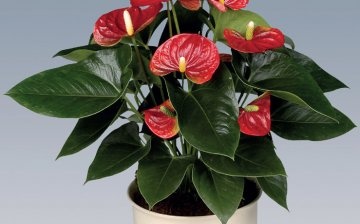
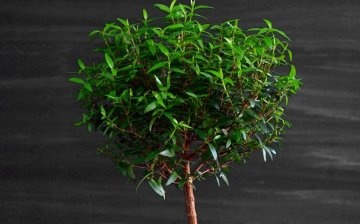
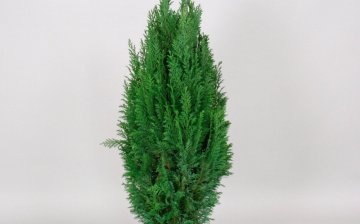






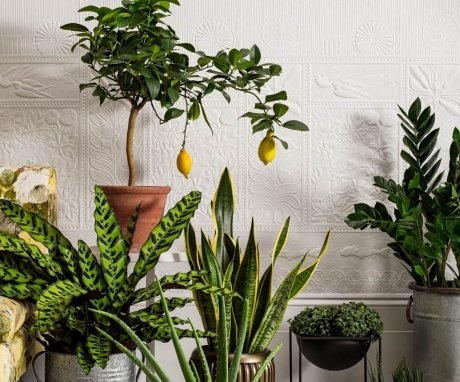
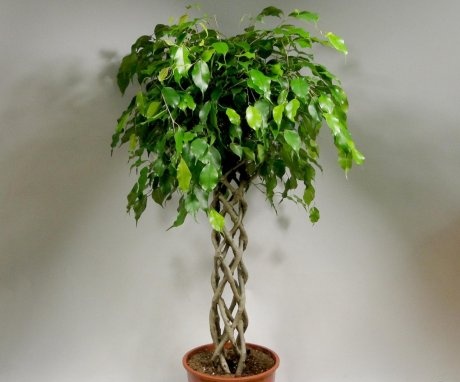
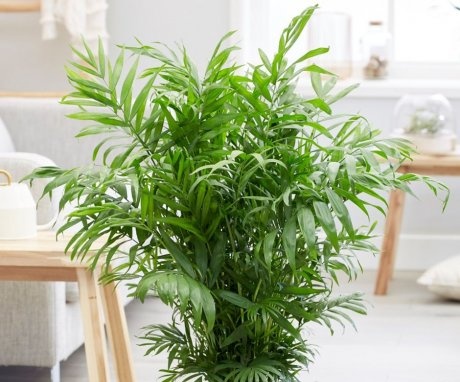

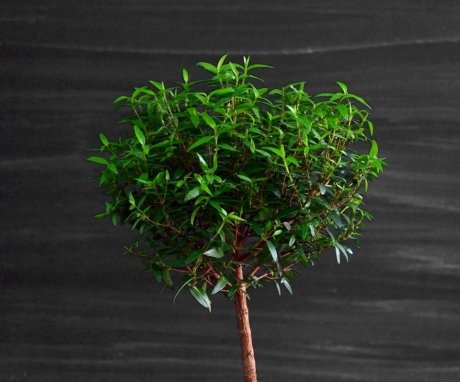
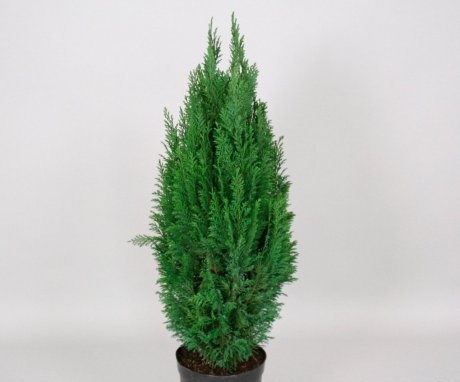
In our apartment there are several plants that purify the air - these are dracaena, aloe and geranium. Moreover, the dracaena already has a height of about a meter. We didn't want to keep the geranium at home, because if you shake it, it smells rich, but because of the beautiful flowers we left it, and now it also clears the air.
I have a lot of indoor plants. And of course there is scarlet, everyone probably has this plant, but I have a whole plantation, because scarlet has many useful properties. And I also have a large lemon tree that has been bearing fruit for several years in a row. Homemade lemons are delicious and aromatic, so I combine business with pleasure.
It seems to me that any indoor plant purifies the air in one way or another. The larger the area of leaves and their total number, the more benefits the plant brings in this regard.
Can you please tell me, I have a lemon plant, an avocado and even a ficus plant began to stretch. Do I need to buy special lamps for lighting for them? When I put them on the windowsill, they begin to bend towards the window. I have a non-sunny side of the house, which is why I am asking if it is possible to grow something without sunlight? Can you tell me specifically about the plants?